 |
||
|
||
| ||
The last large roundup of SCSI discs was published the last summer. Unfortunately, far not all manufacturers often launch new models of the high-end class. We waited a year for new products from the giants. And as we can't wait any longer we think it is high time to reestimate the leaders in these sphere. Today we are going to consider leaders in the 10K RPM class and one model of the 15K RPM class from Seagate. Unfortunately, its close competitors from IBM and Fujitsu are not available yet. First come the specifications:
It is quite difficult to compare hard drives bearing in mind only their specs as every company has its own methods for measuring different parameters. And the only comparable values are dimensions, volume and weight :) As you can see, Seagate has the greatest number of models. A figure in their names means the maximum capacity in the series and letters mean generations: without letter, LP, XL, ES. Earlier, speed characteristics of the series of different capacity were almost equal, for example, 18LX ~ 36 LP ~ 73, but starting from 36XL/36ES/73LP it isn't so. And since the 73LP series much differs from the 36XL one we have added one model of this series to the tested 36 GBytes discs. The Cheetah X15 36LP discs belong to the second generation of 15K RPM HDDs from Seagate. We failed to find drives from the last 10K RPM series of IBM - Ultrastar 73LZX, and from the Seagate 36ES series. But we promise we'll update the review as soon as we get them. TestsTest platform:
Hard Disc Drives:
Here are the participants: MAN3367MC 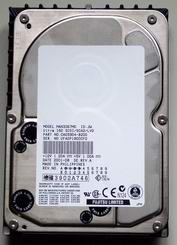 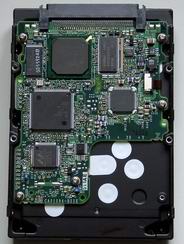 DDYS-T36950 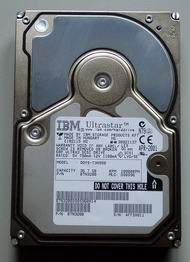 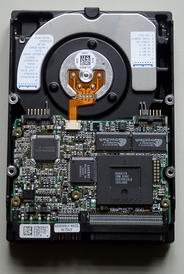 KW36J11 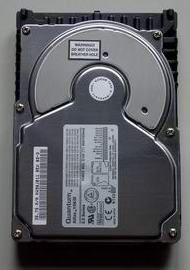 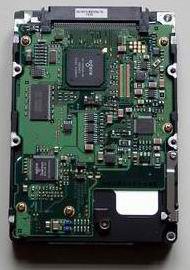 ST336705LW 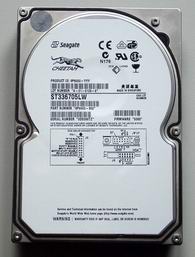 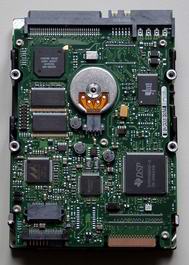 ST373405LW 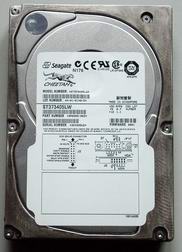 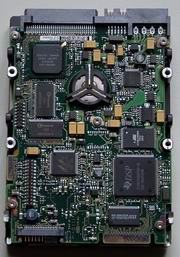 ST336752LW 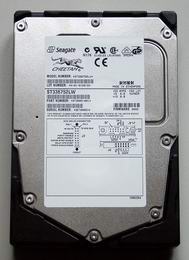 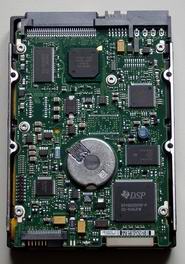 The Cheetah 73LP drive has almost the same PCB as in the first Cheetah X15 series. But the second generation - Cheetah X15 36LP has a new motor and a completely redesigned layout (only the flash memory under the firmware hasn't changed its size). Tests:
For the Winbench the discs had one partition of FAT32 and NTFS. For all other programs any information on partitions was deleted. The Winbench and HDTach tests were carried 3 times, and the results were averaged. The operating time of one pattern at each load in the IOMeter was set to 10 min. Access timeAll three tests were used to measure an access time. For the IOMeter we used the "Average Response Time" as a result for the pattern of 100% random reading with "Queue Depth" equal to 1. 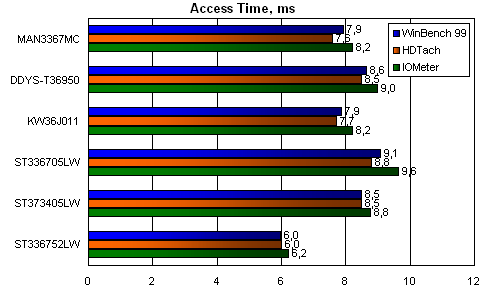 On the whole, the results obtained by different programs are similar, and for the WinBench 99 and HDTach the Cheetah 73LP and Cheetah X15 36LP drives have scored identical results. The aging Ultrastar 36LZX is still able to fight against the fifth generation of the Seagate Cheetah (36XL and 73LP). But it is too weak for a struggle against the latest models from Fujitsu and Maxtor. The latter ones show almost equal results in these tests. The Cheetah X15 36LP is of course leading. By the way, as compared to the G1 15K RPM discs of Seagate the average access time is now better by 12%! Linear reading speedThe HD Tach gives the average results:  These results were expected as we knew the recording density data. The discs with the 9.2 GBytes per side density have the closest results. The detailed graphs over the whole disc surface are obtained with the Winbench program (percentage of a disc size is plotted off the X axis): 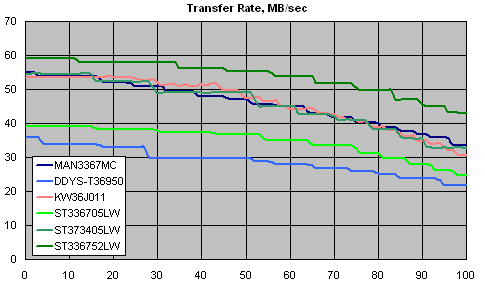 The IBM is falling behind preceded by the Cheetah 36XL with a low density of 4.6 GBytes per side. The leader is, of course, the Cheetah X15 36LP. It is interesting that the other discs have very similar results. If we take into account almost equal access times of the Fujitsu and Maxtor, the integer tests will reveal the gain caused by the firmware optimization. As this past of a disc is hidden from a user, there can be a lot of interesting algorithms. Winbench Integer Performance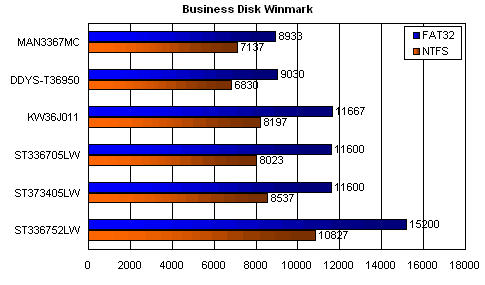 Despite quite good results in the previous tests the Fujitsu MAN3367MC failed to catch up with the group of Atlas 10k III, Cheetah 36XL and Cheetah 73LP. 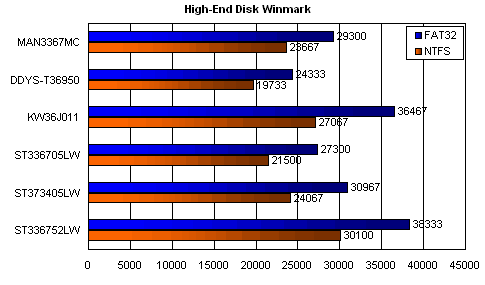 Here the Fujitsu disc has got closer to the Cheetah 73LP, while the Maxtor Atlas 10K III has broken away from its 10K RPM contestants from Seagate and is doing its best to beat the Cheetah X15 36LP. Intel IOMeterThe IOMeter tests are carried out with the Fileserver, Workstation and Database patterns. The load parameter - "# of Outstanding I/Os" is plotted off the X axis.  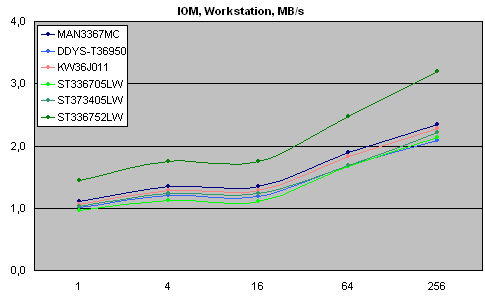 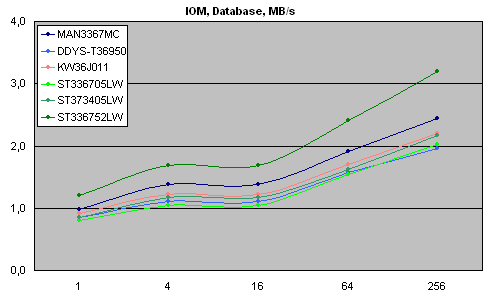 If we exclude the Cheetah X15 36LP as a player of another class, we get a new leader - Fujitsu MAN3367FC. Earlier this drive yielded to the Atlas 10k III, and now it takes a 3-5% lead in the Workstation test and even 10-12% in the File Server and at a heavy load. The Cheetah 36XL and Ultrastar 36LZX come the last, though the gap is not great. TemperatureThe temperature was measured by an external digital device on the side panel of the hard drive after 30- min. operation of the IOMeter test with the random reading pattern. 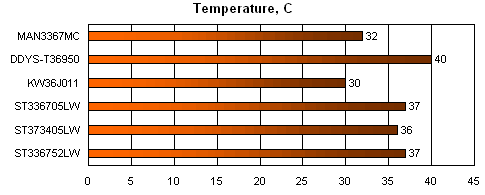 The Fujitsu MAN3367MC and Maxtor Atals 10K III shine in this test as well. ConclusionAlthough Seagate is leading an aggressive policy other companies do not give up. The long-awaited Maxtor Atlas 10K III performed quite well, especially in the integrated ZDLabs tests. This disc was announced in Q1 2001 and is of the third generation of 10K RPM discs from Quantum. It should be noted that reorganization of Quantum and Maxtor caused delays in delivery of this model, but it still successfully competes against the latest products from Seagate. Fujitsu keeps on producing high-quality products. The MAN3xxx series is the fifth generation of 10K RPM drives of this company. And in the IOMeter tests it takes the leading position in its class. Seagate is a confident leader in technologies. Among its products there is the fastest disc of 15K RPM - Cheetah X15 36LP. It is the second generation of X15 discs which beats the first one by 12% in the access time and by 50%(!) in linear reading speed. This company has also a disc of the largest capacity - Barracuda 180; although it belongs to the 7200 RPM class it is able to fight against junior models of Cheetah. And now we are waiting for IBM to launch its 10K
RPM Ultrastar 73LZX model and one of the first competitors against
the Cheetah X15 - Ultrastar 36Z15.
Write a comment below. No registration needed!
|
Platform · Video · Multimedia · Mobile · Other || About us & Privacy policy · Twitter · Facebook Copyright © Byrds Research & Publishing, Ltd., 1997–2011. All rights reserved. |